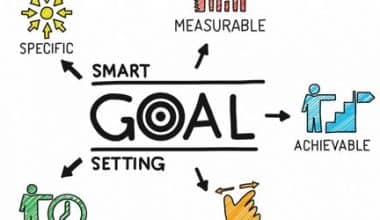In our volatile financial landscape, effective risk management is more crucial than ever. This article delves into the innovative methods and cutting-edge technologies transforming risk management. Discover how these strategies not only identify and mitigate risks but also uncover opportunities, reshaping how financial institutions and businesses secure their futures.
Understanding the Changing Financial Landscape
The financial realm dances ceaselessly, molded by formidable forces. First, there’s globalization, knitting economies together so that a tremor in one corner resonates worldwide. Then, technology strides in, transforming how we trade, with algorithms and digital platforms accelerating transactions.
Lastly, regulations step in, setting the rules and ensuring fairness. Yet, these dynamics usher challenges. Globalization brings vast opportunities but also vulnerability to international shocks. Technology, while efficient, raises fears of cyber threats and market instability. Regulations, vital for stability, pose complexities in swift adaptation.
Traditional Risk Management Methods
In the stable past of finance, techniques like diversification and hedging were the go-to shields against market storms. Diversification spreads investments wide, and hedging offsets losses, protecting investments from market chaos.
Yet, our fast, connected world has outpaced these methods. Diversification might not guard against big crashes, and hedging, though valuable, is costly and complex, limiting its use.
Today, our financial world is intricate. Global shifts, tech progress, and complex finances pose hard-to-measure risks. It’s vital for experts to see these old methods’ limits. They’re helpful but not cure-alls. Recognizing this opens the door to new, smart strategies that fit our modern challenges.
Innovative Approaches to Risk Management
In the past, risk evaluation relied heavily on historical data. However, today, a new era is unfolding with the emergence of big data analytics and machine learning algorithms. These technological advancements enable us to process vast amounts of data in real time, uncovering patterns and potential risks that might have eluded us before. It’s akin to having an indefatigable army of analysts diligently anticipating risks and facilitating more informed decision-making.
Artificial Intelligence (AI) transcends the realm of futuristic robots; it’s a transformative force in the realm of risk management. AI-powered risk models can scrutinize intricate datasets, adapt to shifting conditions, and predict risks with remarkable precision. They function as turbo-charged risk calculators, ceaselessly learning and refining their prognostications, rendering them an indispensable asset in a dynamic financial landscape.
Understanding human behavior represents a pivotal facet of risk management. Behavioral finance delves into the psychology underpinning financial choices. By integrating behavioral insights, we gain an improved ability to anticipate how individuals and markets may respond to diverse risk scenarios. It’s akin to enlisting a behavioral expert on your risk management team, aiding in navigating the human dimension of finance.
Blockchain technology is more than just a tool for cryptocurrencies. Its transparent and tamper-proof ledger system holds immense potential for risk management. By recording and verifying transactions in a decentralized and secure manner, blockchain bolsters transparency “reduces fraud” and streamlines the risk assessment process. Visualize it as a digital polygraph for financial data.
Adaptive Risk Management
Adaptability in risk management is akin to having hidden reserves – a strategic advantage that can be tapped into when the need arises. By embracing adaptive risk management strategies, organizations can stay ahead of the curve fortifying themselves against potential disruptions; The emphasis shifts from static predetermined plans to dynamic, responsive frameworks.
Instant risk evaluation is vital, waiting for quarterly reports isn’t enough anymore; Decisions must be quick based on the latest and most precise data. Real-time insights help organizations spot emerging risks, enabling fast informed decisions that can prevent crises.
Stress tests and scenario analysis act as guides in flexible risk management; By testing systems and plans in hypothetical but realistic situations, organizations can find weaknesses and create backup plans. These tools show the way, offering valuable insights into using hidden reserves effectively during emergencies.
Regulatory and Compliance Challenges
In the realm of modern risk management, cutting-edge techniques propelled by technologies such as artificial intelligence and blockchain offer exciting solutions. Yet, these innovations pose intricate regulatory puzzles. Conventional systems lag behind, struggling to match the swift evolution of these methods. Consequently, businesses navigate a labyrinth of rules, uncertain about incorporating new approaches while staying within legal bounds.
The pressing need is to find an equilibrium between nurturing innovation and upholding regulations. Companies must invest in extensive research and collaborate closely with regulatory authorities. By staying updated on shifting regulations and actively embracing compliance standards, businesses can harmonize their inventive risk management strategies with legal prerequisites. This balance not only shields against legal repercussions but also cultivates an atmosphere of confidence and dependability among stakeholders.
Final Thoughts
Innovative approaches to risk management are vital in today’s dynamic financial world. Embracing technology and new methodologies not only helps in identifying and mitigating risks but also uncovers valuable opportunities. By staying agile and proactive, businesses can safeguard their interests and thrive amidst constant change, ensuring a stable and prosperous future.






